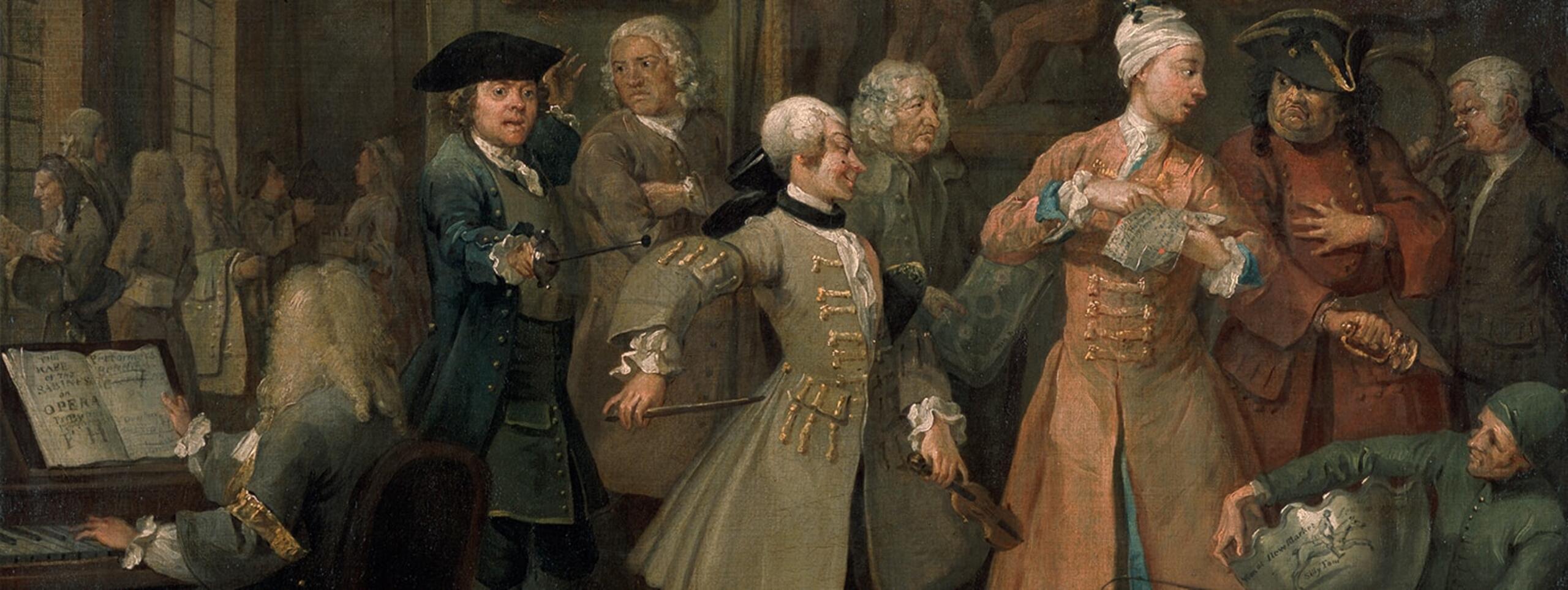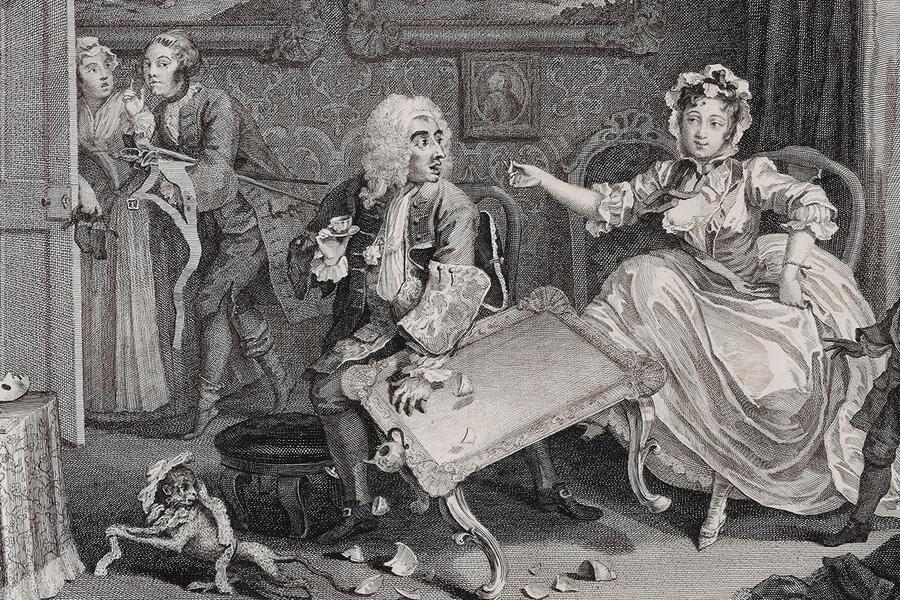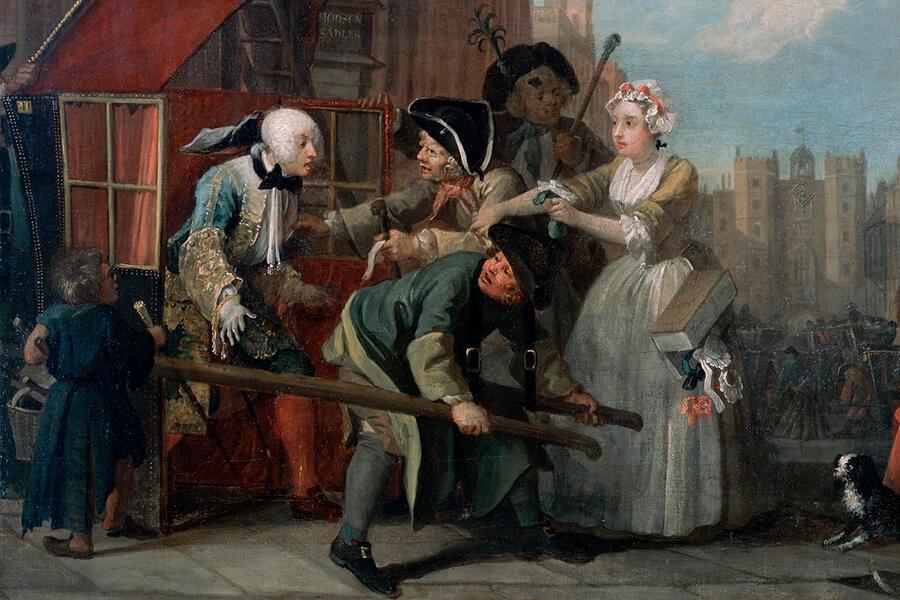William Hogarth (1697-1764), A Harlot’s Progress, 2 (detail), 1732. Etching and engraving, 31.4 x 37.8. Andrew Edmunds, London
What caused his rise to fame?
Hogarth’s real success as a painter came with the creation of the first of his series: A Harlot’s Progress. In his book of Autobiographical Notes Hogarth describes with unusual candour how he had the idea for a series after becoming disillusioned with making a living from painting portrait groups. These ‘had some novelty [and] succeeded for a few years … but … that manner of Painting was not sufficiently paid to do everything my family required I therefore recommend[ed] those who come to me for them to other Painters and turn[ed] my thoughts to still a more new way of proceeding, viz. painting and Engraving modern moral Subject[s] a Field unbroke up in any Country of any age’. Hogarth’s narrative series, which he named are constructed like plays, each picture a different scene, telling a contemporary story of Hogarth’s invention, usually one with a moral message.
The idea for a pictorial sequence that depicted contemporary life (as opposed to scenes from history) came to Hogarth piecemeal, and began according to the chronicler George Vertue, with a painting of a soft pornographic kind, designed to appeal to a rakish clientele, that Hogarth showed in his studio. It was an oil sketch of a Harlot, that eventually became scene three in the series. The prostitute in the picture was so alluring that Hogarth was encouraged to paint another to make a pair until, again according to Vertue ‘by his fruitful invention, … he made six’.
In A Harlot’s Progress, probably painted between 1729 and 1731, the protagonist is tempted into prostitution, spiralling into moral debauchery and eventually dying of siphyllis. At her wake, other prostitutes ply their wares with the other mourners, continuing the cycle of immorality and death. The series, quickly gained popularity and amplified Hogarth’s reputation. , was quickly followed by A Rake’s Progress (1734), in which the young Tom Rakewell squanders his inheritance on illicit pursuits, falling into ruin, and eventually madness, as a result.


